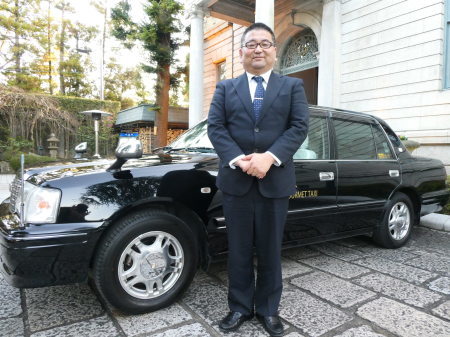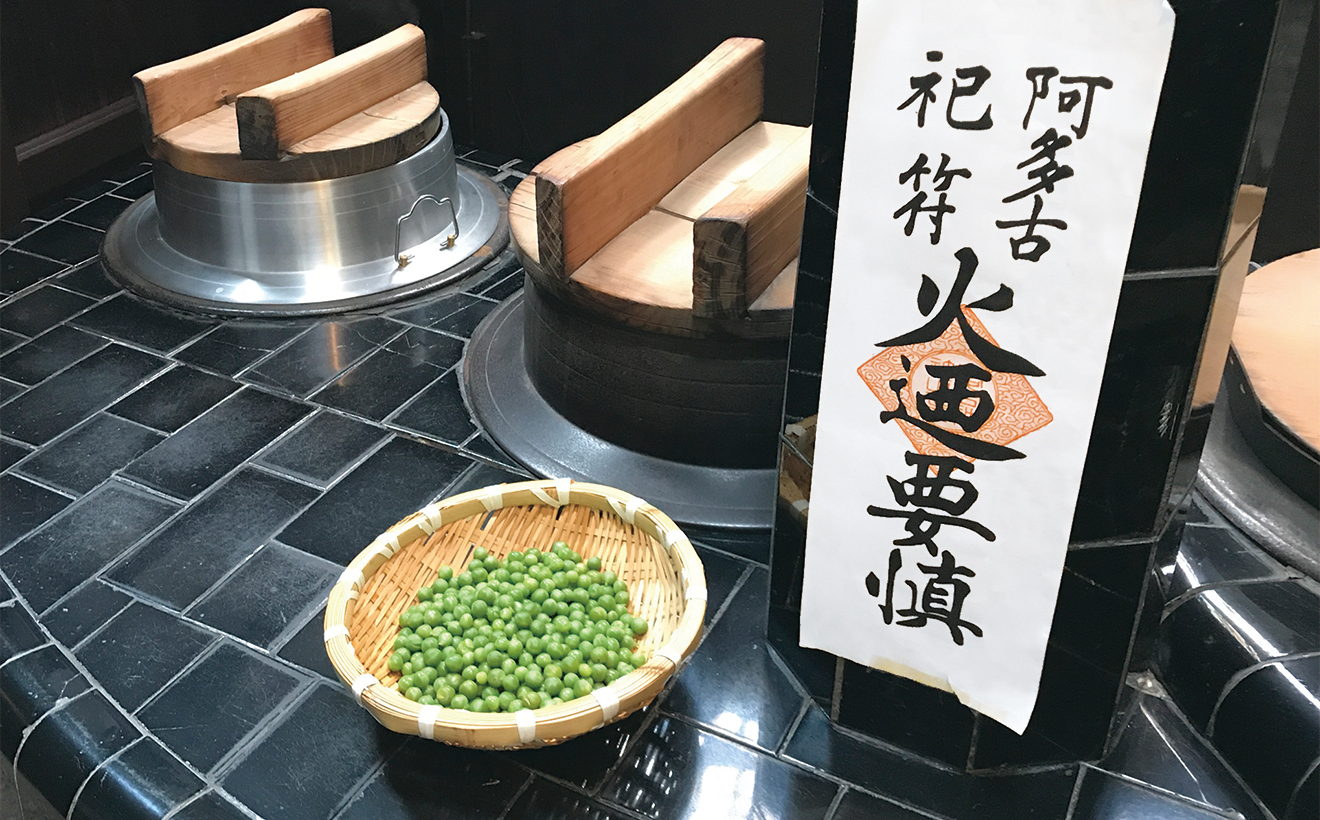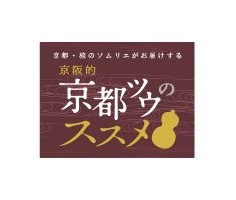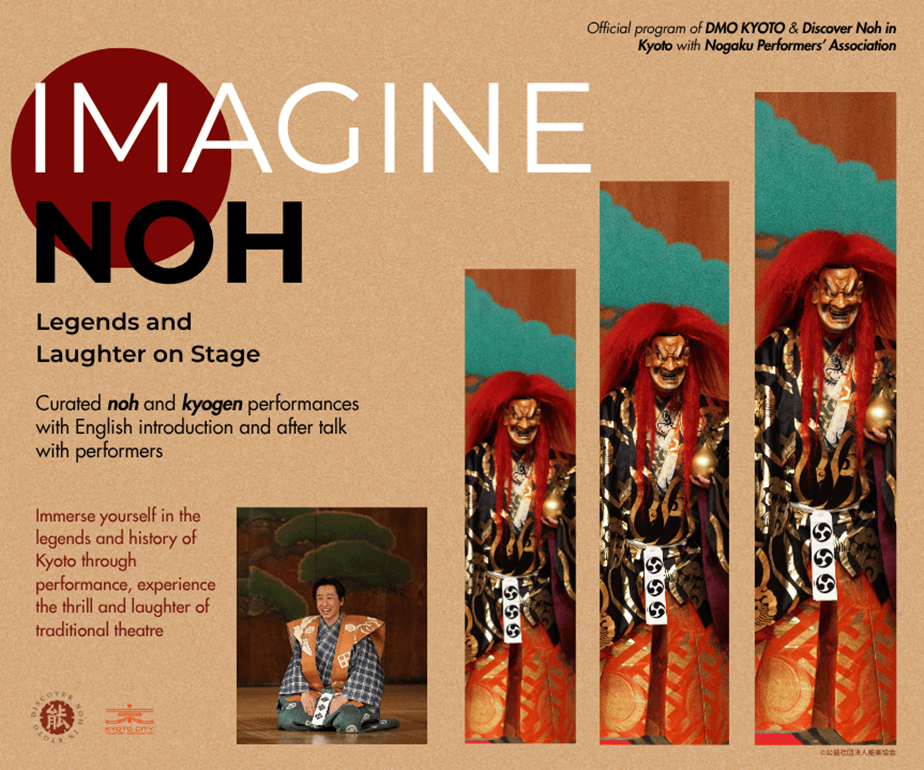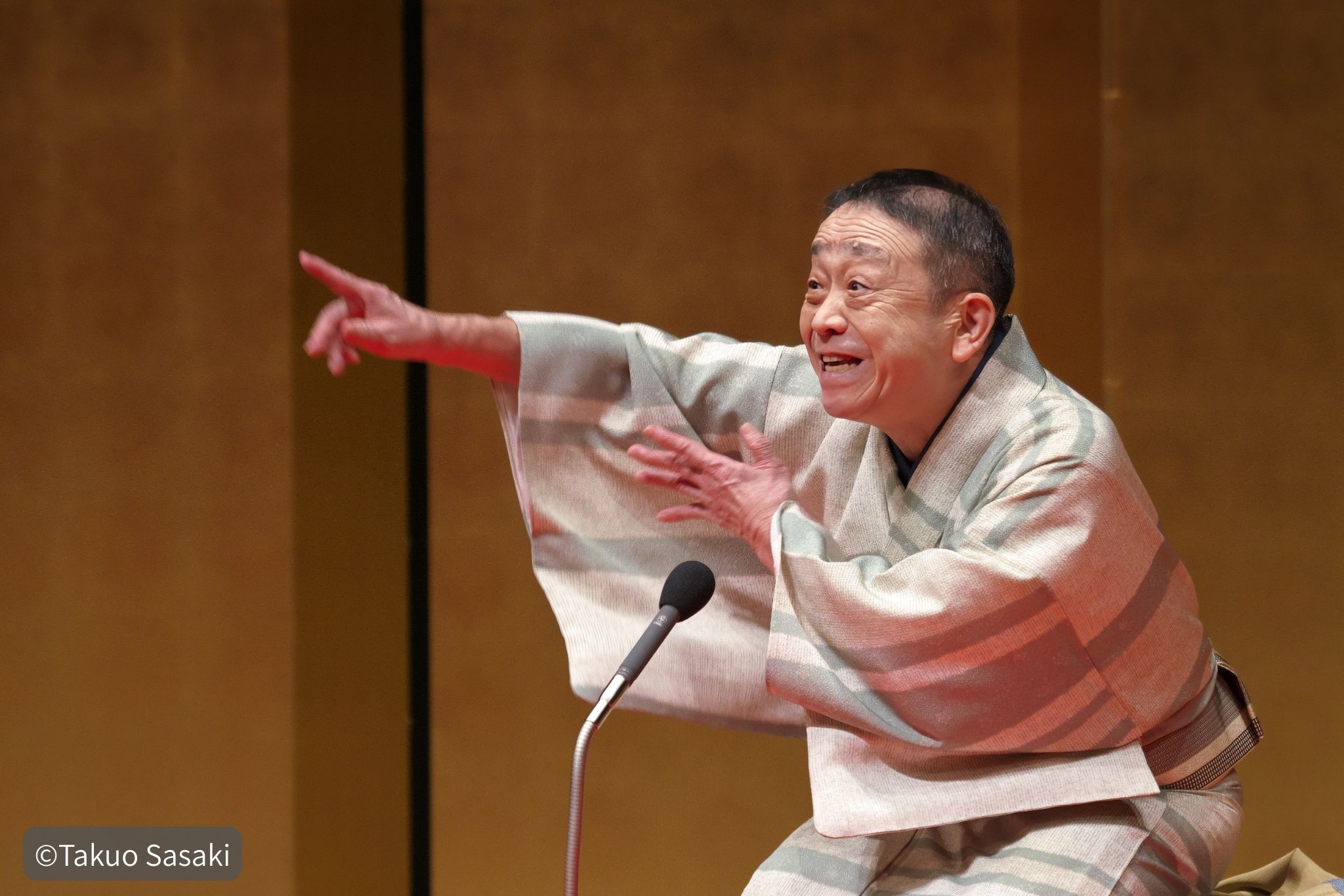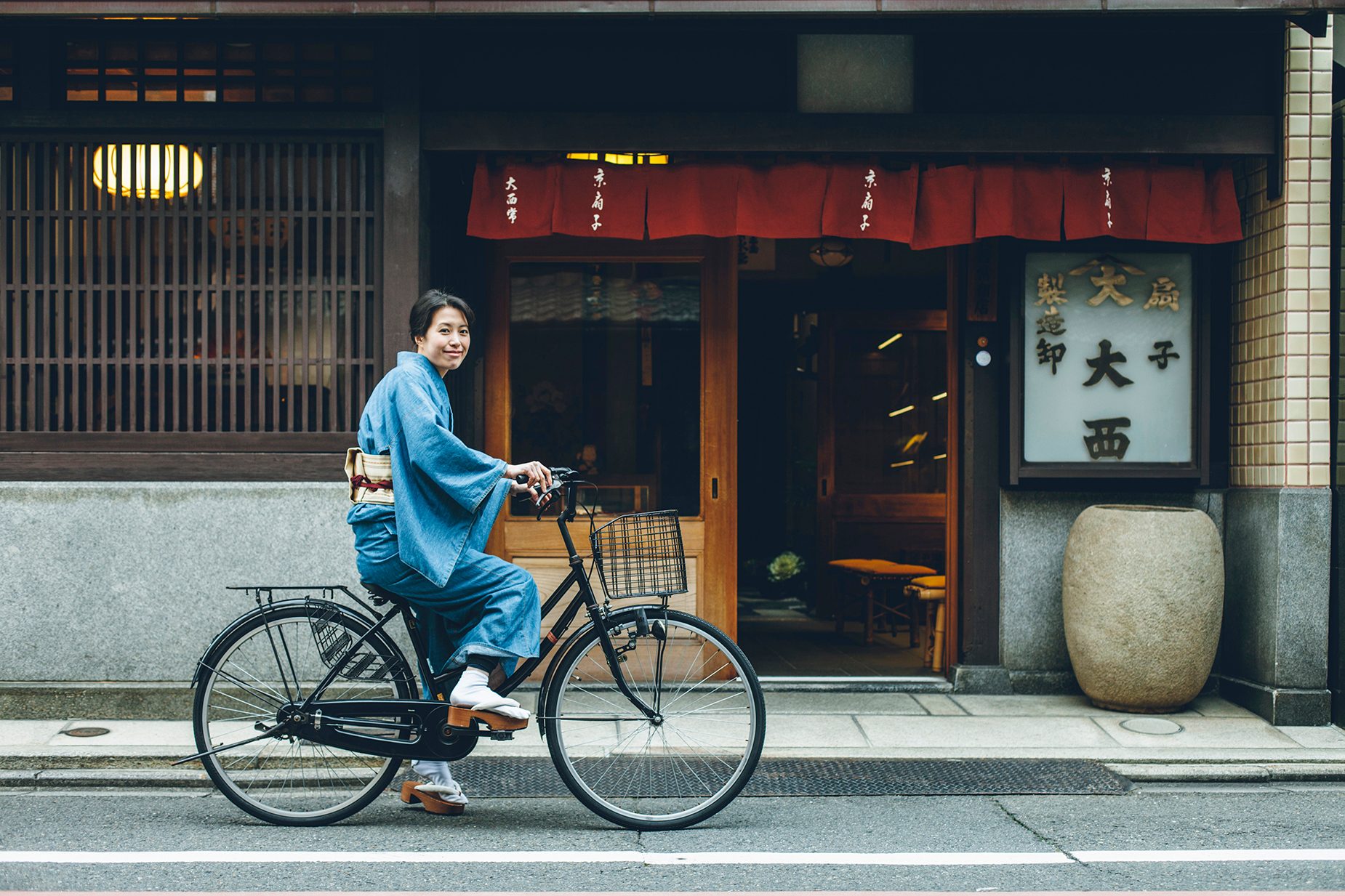
Ohnishi Tsune Shoten is a Kyo-Sensu (Kyoto folding fan) shop located in an old machiya townhouse on Matsubara Street (downtown Kyoto).
Rie Ohnishi, working as the fourth generation owner-to-be since 2016, is always dressed in a kimono. Ms. Ohnishi says she got rid of all her western-style clothes, so she sticks to wearing a kimono at all times.
We followed a day of Ms. Ohnishi’s life.

Rie Ohnishi
After graduating from Ritsumeikan University, and working at a major telecommunications company, Rie Onishi joined Ohnishi Tsune Shoten in August 2016. As the fourth generation of the shop, she carries out many duties, from retailing to product development. She lives in the Ukyo Ward of Kyoto with her husband and son. Ohnishi Tsune Shoten, founded about ninety years ago, operates in a Kyo-machiya townhouse on Matsubara Street (downtown Kyoto).
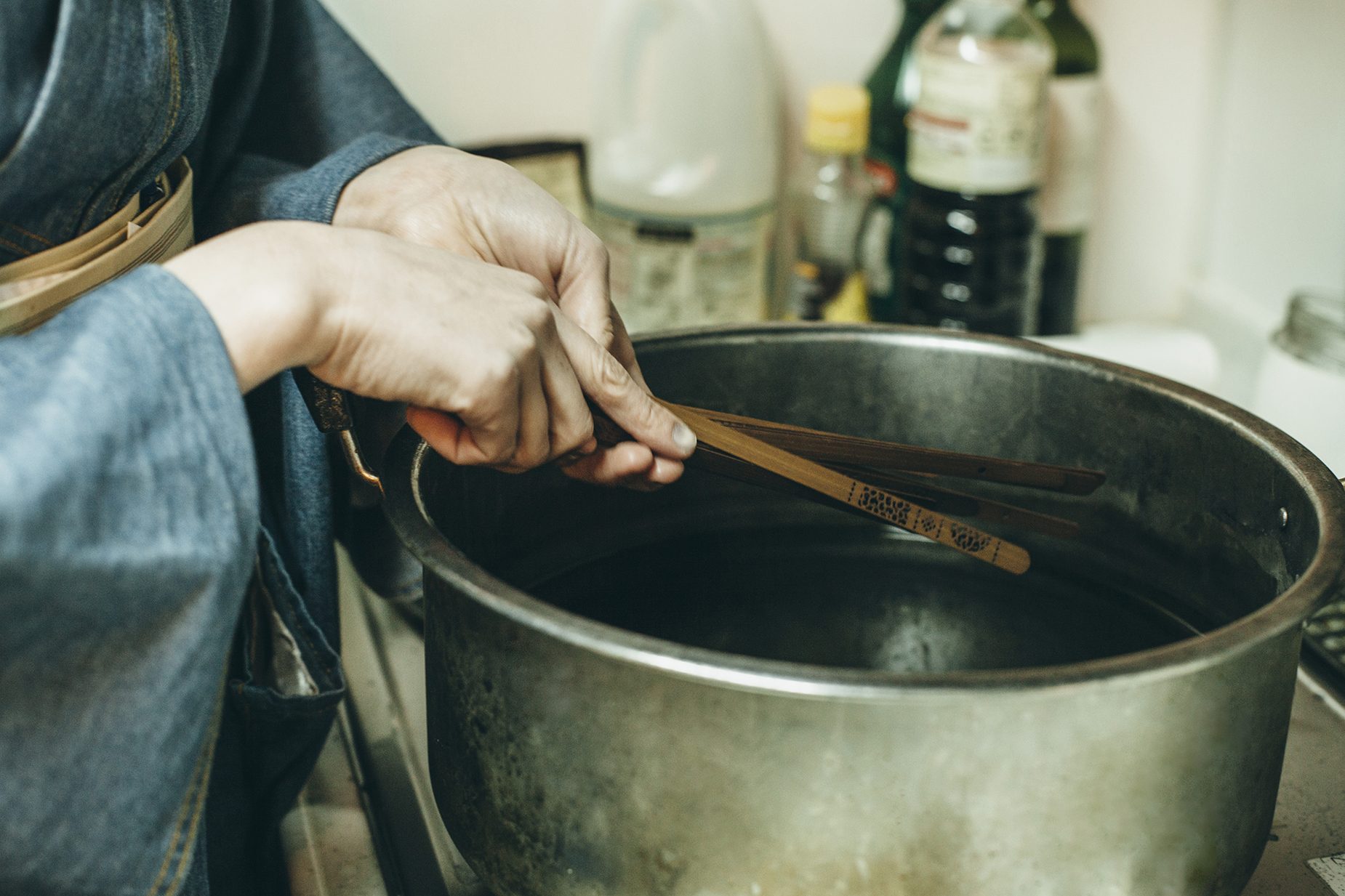
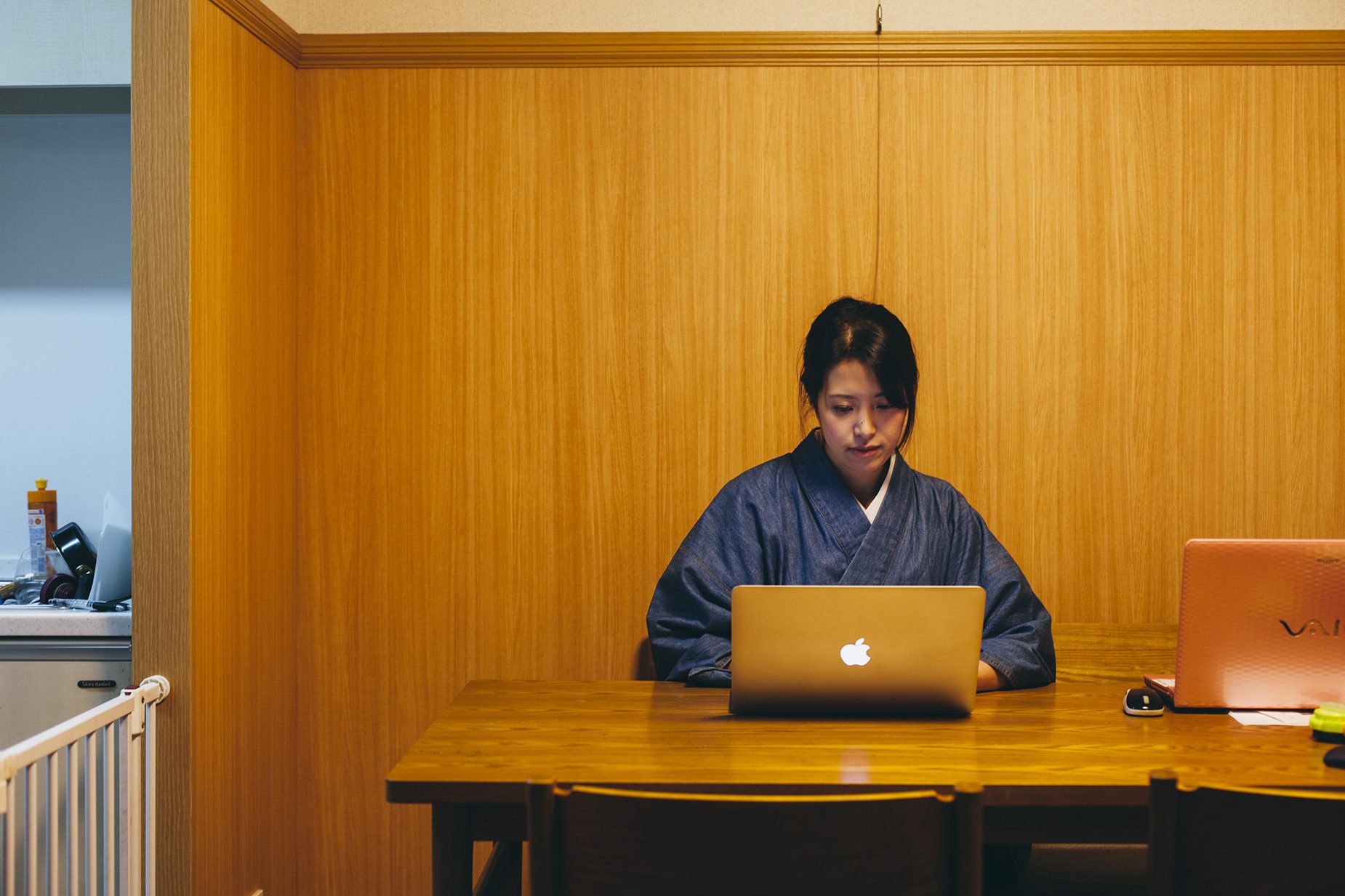
She’s always in a kimono whether she’s at home, on her day off, or on a trip; except for when she goes to bed. She says that she “would take the easier way” and wear her western-style clothes if she “felt hungover,” so she decided to get rid of all her western-style clothing.

She leaves for work around 9 am. She drives from her house in the Ukyo Ward to the shop in the Shimogyo Ward with her three-year-old son. Recently she sometimes has one too many drinks the day before, so she purchased a breathalyzer, just for in case.

She loves listening to Amuro Namie on the drive. She rotates between the 20th and 25th anniversary DVD, depending on her mood of the day. Her Amuro craze started after the singer retired.
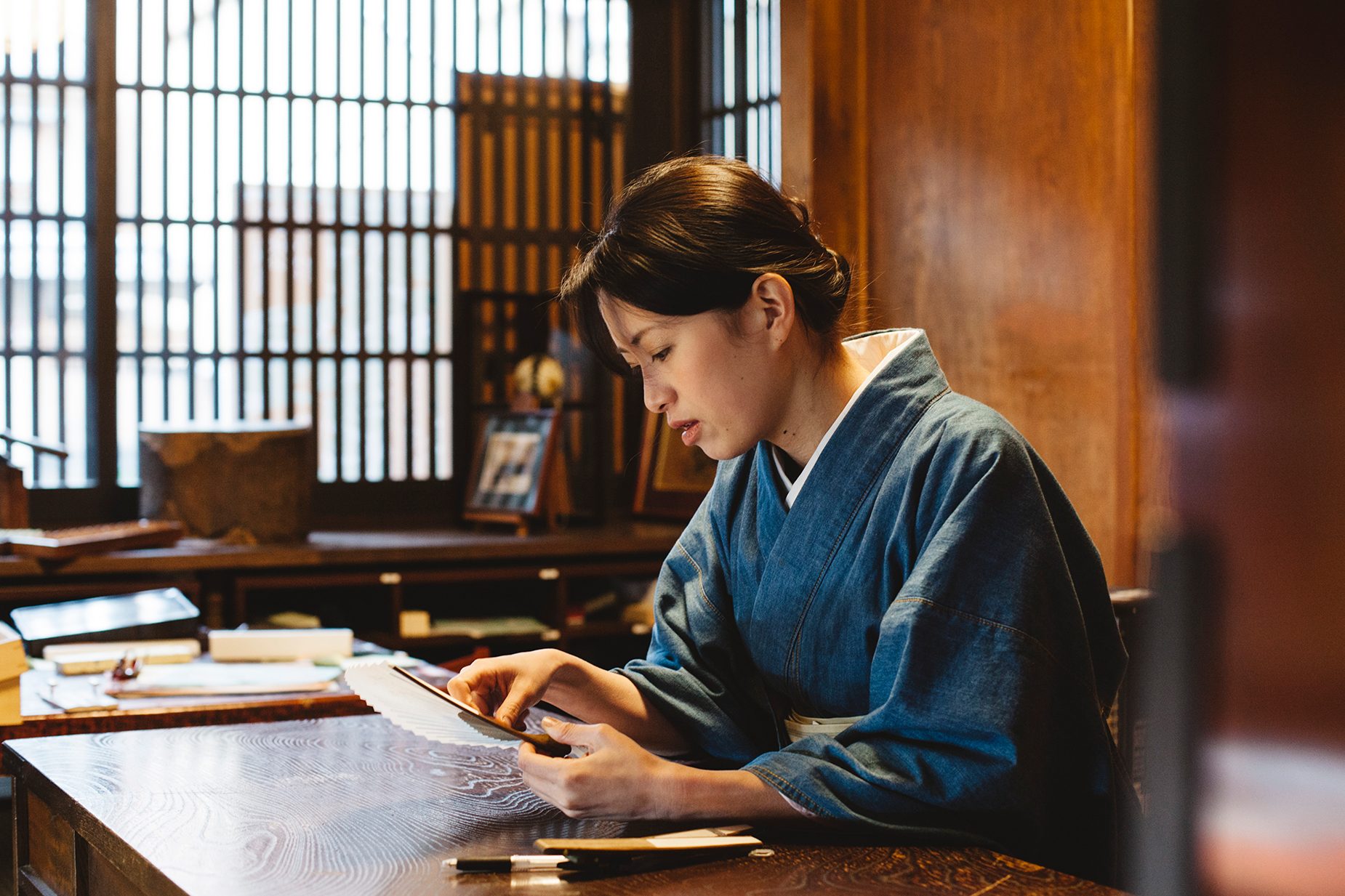
She attends to the customers in the shop, as she also takes care of office work and product inspection.
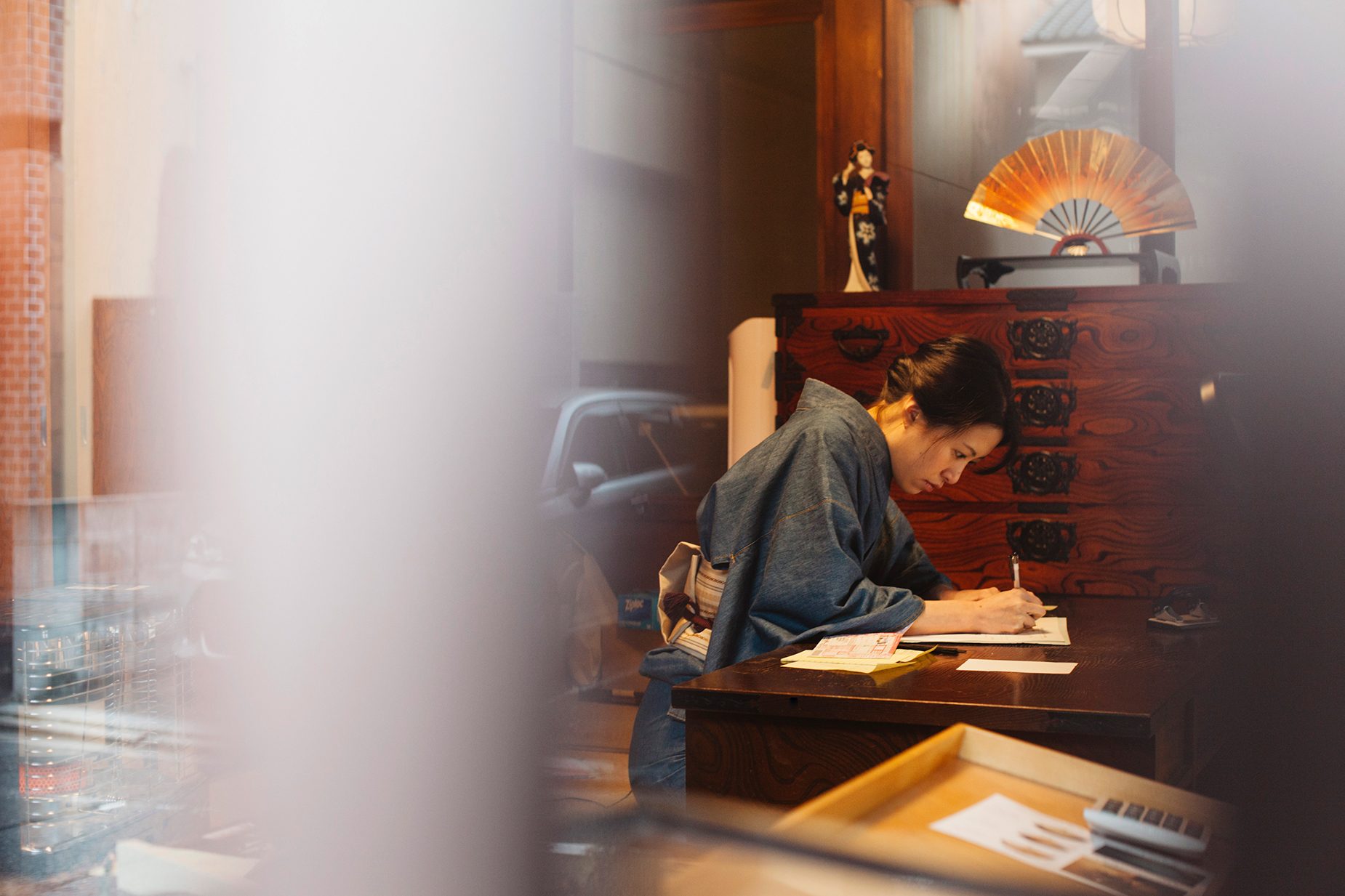
Four people work in the shop: her father in his 70’s, employees in their 60’s and 70’s, and herself in her 20’s.
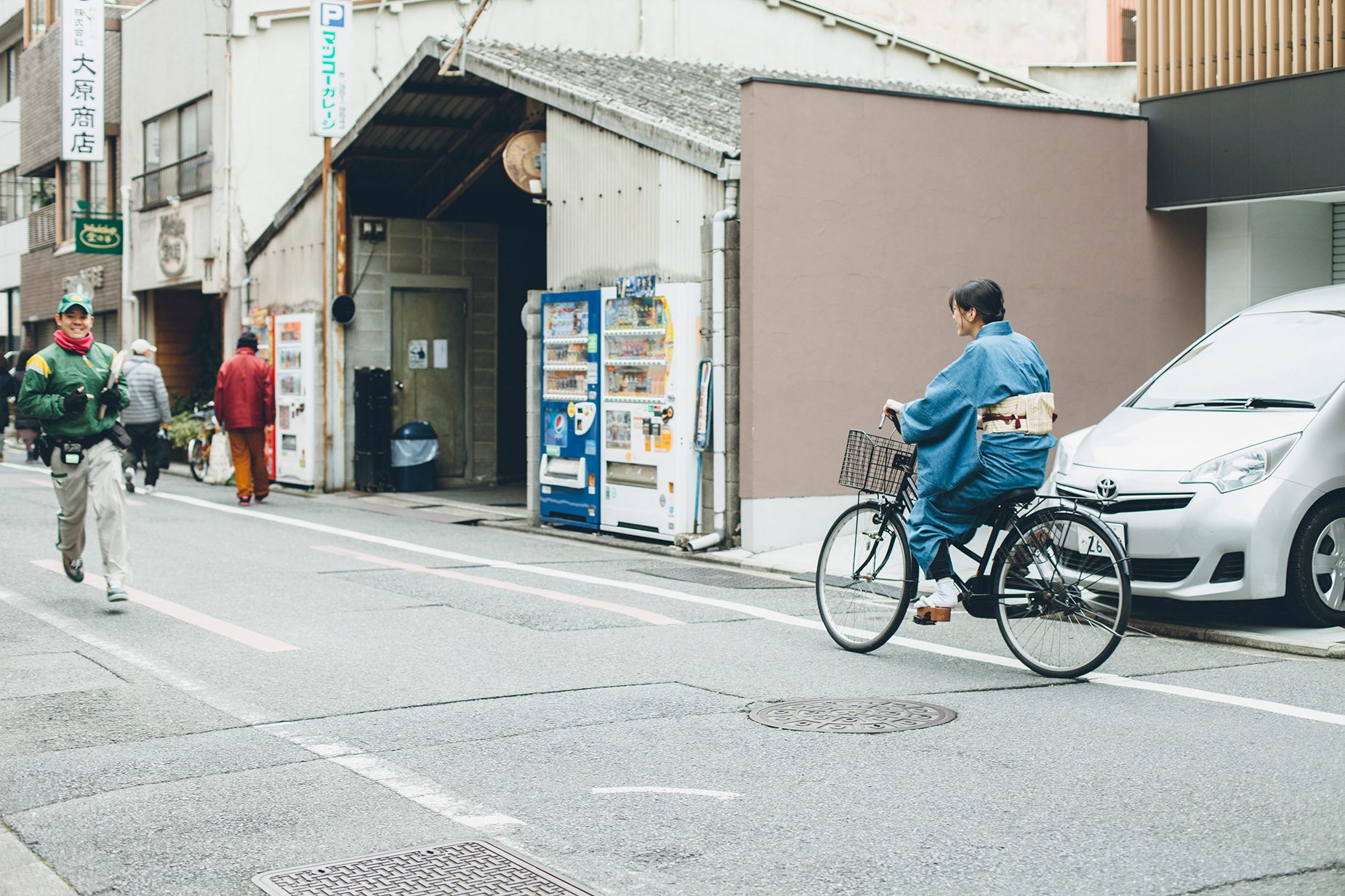
That means that she becomes in charge of most of the outside work, including collecting and delivering the products.

She rushes around the city by bicycle and car. “When I’m riding around like this on my bicycle in a kimono, some older ladies, that I don’t know, get upset and tell me, ‘You must wear the monpe pantaloons!” (to cover the hem of the kimono)

But she never has enough time to get around to that.

On this day, she was delivering her shop products to a new traditional crafts shop, Master Recipe Gion Kyoto Shop, which opened last November (2018).
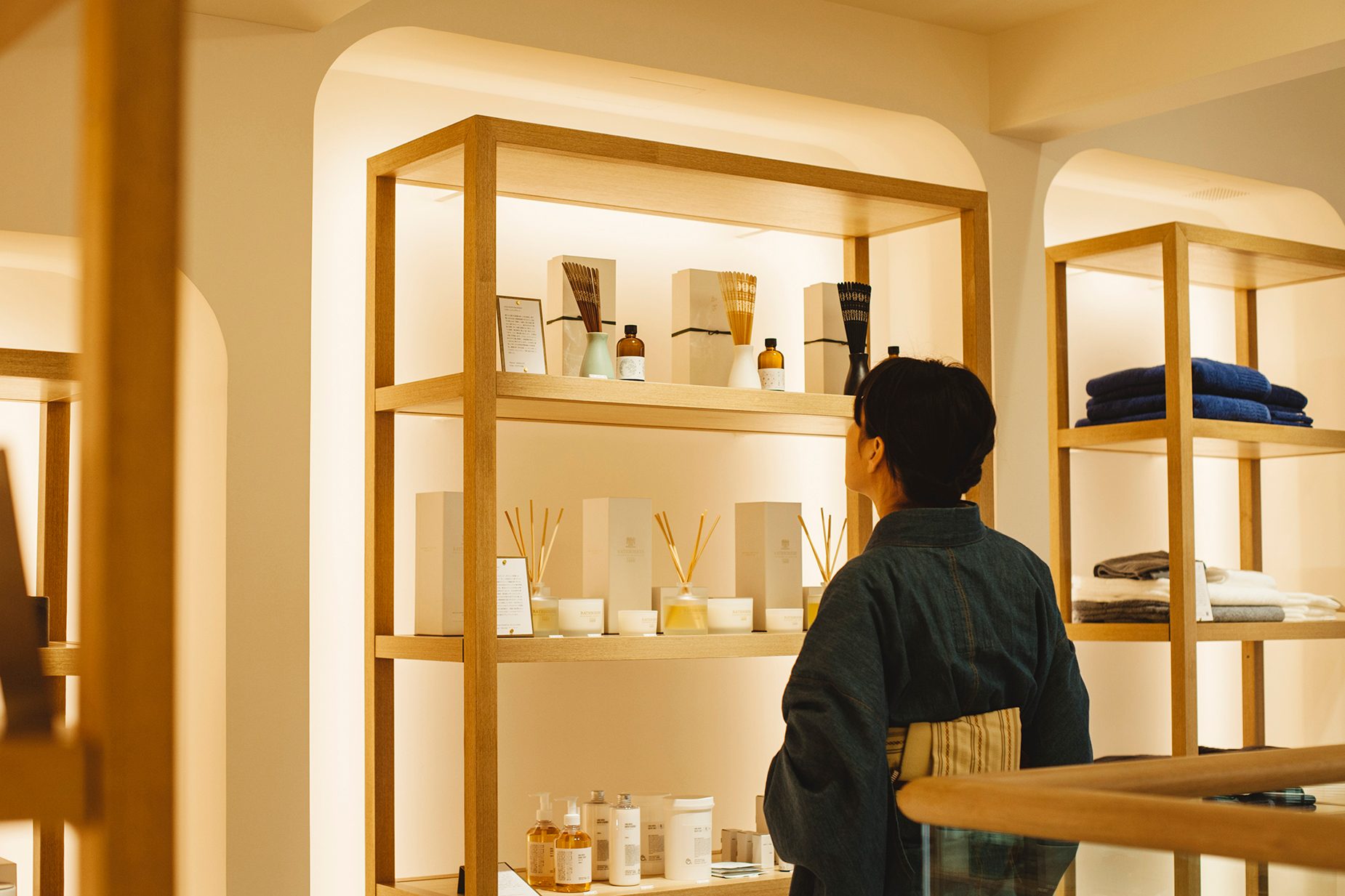
Her eyes turn to Room Fragrance KAZA, a product that Ms.Ohnishi led the development project for. She is concerned about the sales of the product.
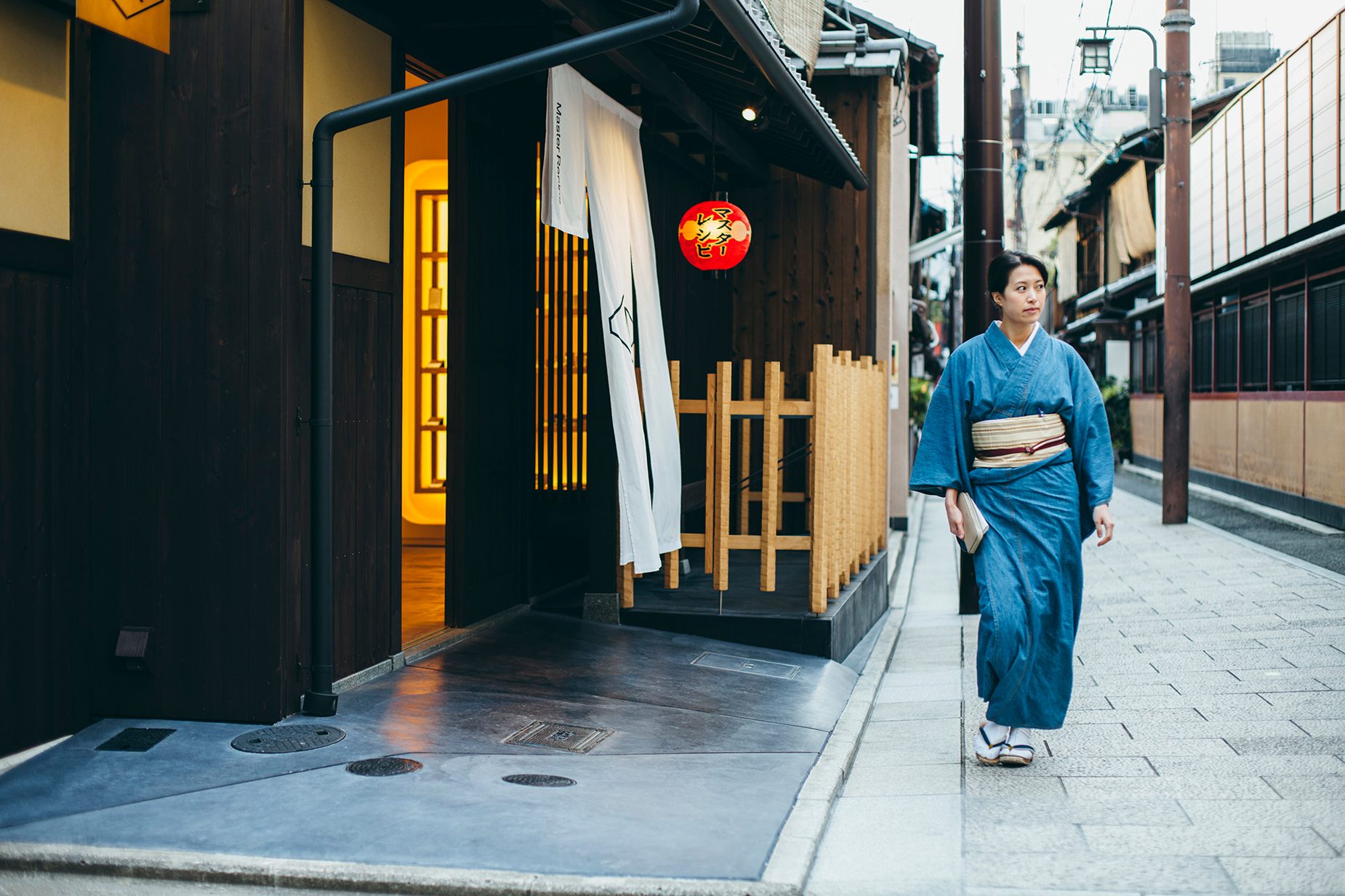
On her way back, she went by to greet her chanoyu (tea ceremony) teacher, who was holding a tea gathering nearby. Then, she rushed back to her shop.
—– While you are at work, what does your three-year-old son do?
Ohnishi: He is going to nursery school from this April, but for now, a few neighbors take care of him at my parents’ house, which is near the shop. They are not blood relatives, nor do we pay them for doing so, but they willingly take care of my son. Even when I have to go to Tokyo on a business trip, my mother and those neighbors look after him. I appreciate that.
—- That’s nice that you have neighbors who can take care of your son.
Ohnishi: My son is very attached to them, too. They treat him more gently than we do, for one thing (laughter).
—- Are they also mothers around your age?
Ohnishi: No, they’re around in their 70’s. So now my son speaks like an old lady, and even shares the neighborhood’s small talk with me. It’s quite adorable (laughter).
—– I imagine that a lot of the people you work with are also in the older age group.
Ohnishi: That’s true. Kyo-sensu is made through nearly 90 detailed procedures. Our business is centered on the production and wholesale of the fans. I collect the fan parts from one artisan in charge of one process, inspect them, and then take them to another artisan in charge of the next process. And finally, deliver the finished products to our clients. Most of the artisans I work with belong to the generation old enough to be grandparents. I take care to maintain a good relationship with the artisans because whether they would be willing to do us an extra favor or not can make a big difference at times.
—– Why did you decide to make kimonos your everyday clothes?
Ohnishi: I thought people might remember me better if I became the one that’s always in a kimono, and we also have many clients in the kimono business. If I kept western-style clothes with me, I was afraid that I would end up wearing those, so I got rid of everything except for my sleepwear and tracksuits.
—– That’s a bold decision to make. That means you’re wearing kimonos in your private life, too.
Ohnishi: Because kimonos are all I have, whether I’m in the park with my child, or taking a family vacation overseas. I also find it suitable for business trips because if I take two kimono robes and two obi sashes, then the coordination can multiply, plus, kimonos can be folded flat, so they don’t take up much space.
—– And, you always have a sensu with you.
Ohnishi: Of course. But, I often get in trouble because I easily lose mine when I get drunk. Usually, in the first shop. I really shouldn’t do that (laughter).
—– I can’t quite picture the way someone strict enough to throw away all her western-style clothes, would drink like that (laughter).
Ohnishi: I’m not strict with myself when I drink. A low-malt beer called the Green Label is my brand, and I drink it like water to accompany my sake or wine. I know it’s ridiculous (laughter).
—– And do you drink often?
Ohnishi: Nowadays, I’m cutting down on it, but I still often have chances to drink with people I know through work. I have someone watch my son while I go out to drink, so I feel like I’m in a hurry to drink fast and get the drinks to work quickly, so I’m usually out of it by around 8:30 pm.
—– I see there are some business aspects to it, like drinking with your business partners.
Ohnishi: It may sound like an excuse, but yes, that surely is one factor.
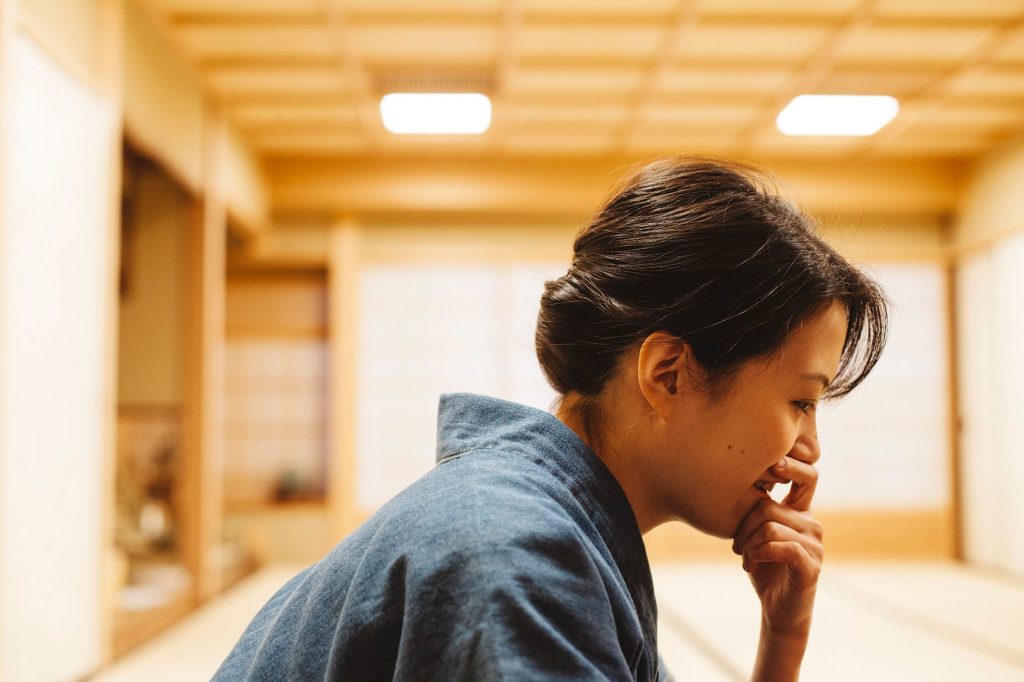
The shop is in a Kyo-machiya (traditional Kyoto townhouse) built about 150 years ago. Lessons of traditional performing arts, such as Noh theater and Kamigata-mai dance, are sometimes held in the large tatami rooms upstairs.

Ms. Ohnishi joined her family business Onishi Tsune Shoten in 2016, but she has been around traditional performing arts since her childhood; she was also taken to watch Kabuki theater. “My favorite actor is perhaps… Tamasaburo,” Ms. Onishi says.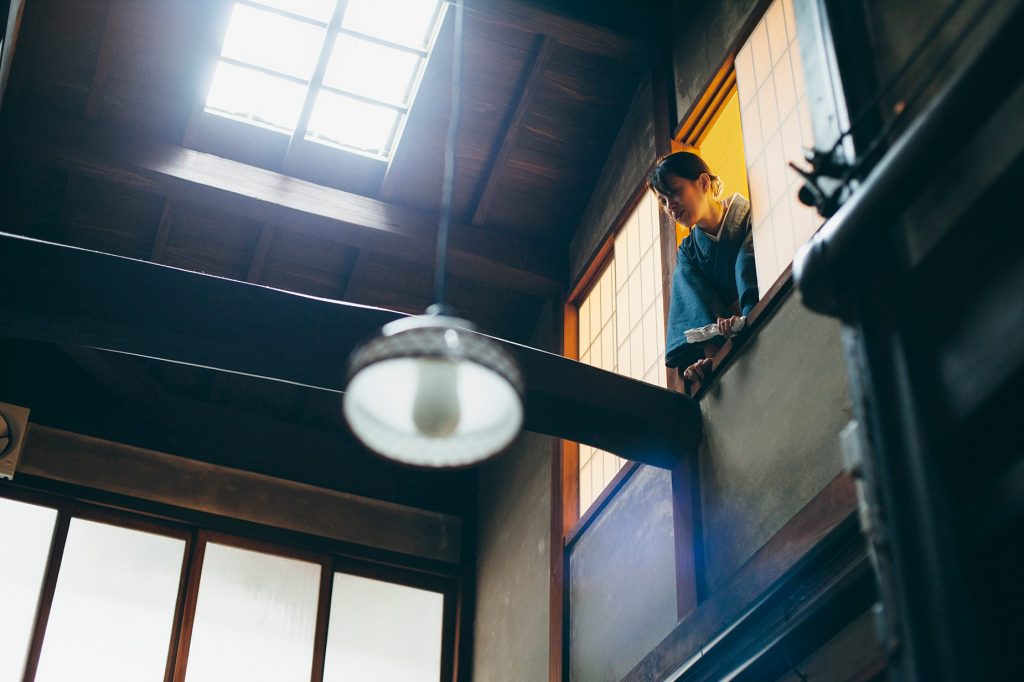
The large tatami room on the second floor used to be the maids’ room. One could easily look down at the okudo-san (earthen kitchen stove) in the corridor downstairs.
The okudo-san (earthen kitchen stove) is still in use, especially when special events are held. “I can’t do it. You need to cook a lot at once, and it’s difficult to handle,” says Ms. Onishi.
Above the okudo-san are the Seven Deities of Good Fortune, and Atago Shrine’s talisman to prevent fire hazards.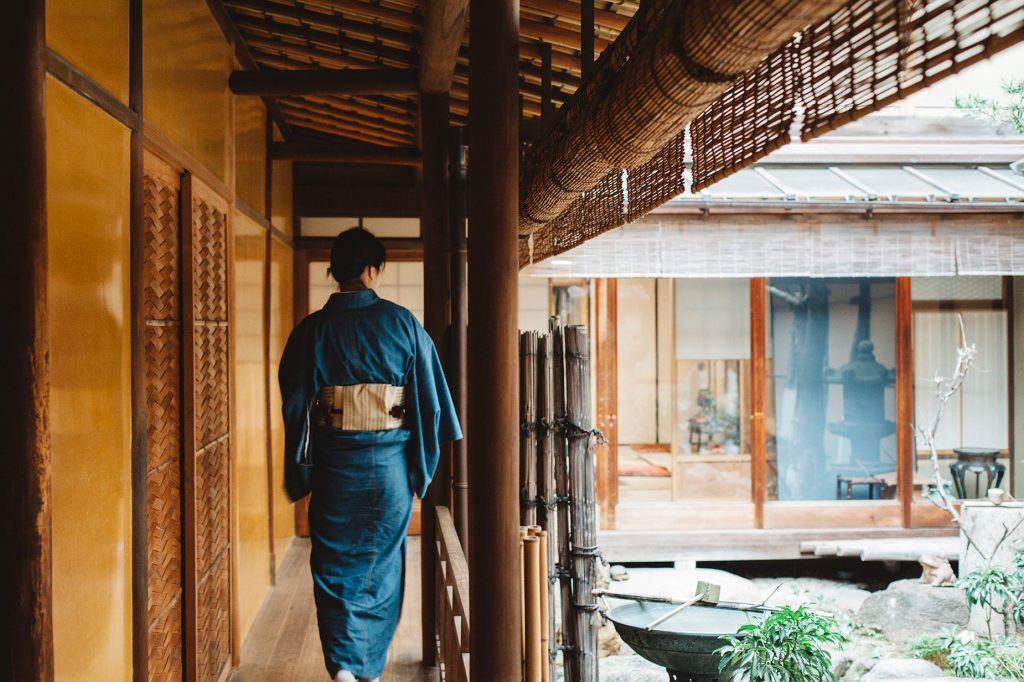
The house is not wide but long toward the back, typical of a Kyo-machiya. There is a rather large courtyard in the back quarters.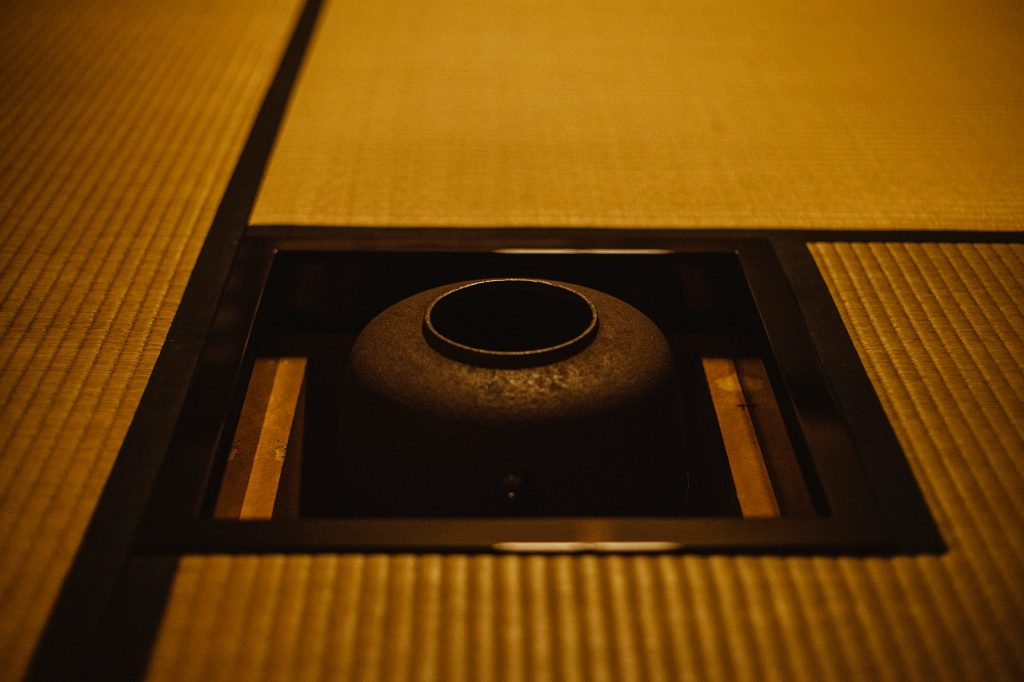
The garden also serves as a roji path that leads to the chashitsu tea room, Josen-an, where tsukigama monthly tea gatherings are held.
Ms. Ohnishi with her favorite tea bowl in her hand.
When she wants to change her mood, she goes to the tea room. She refreshes herself with a bowl of matcha in the serene atmosphere.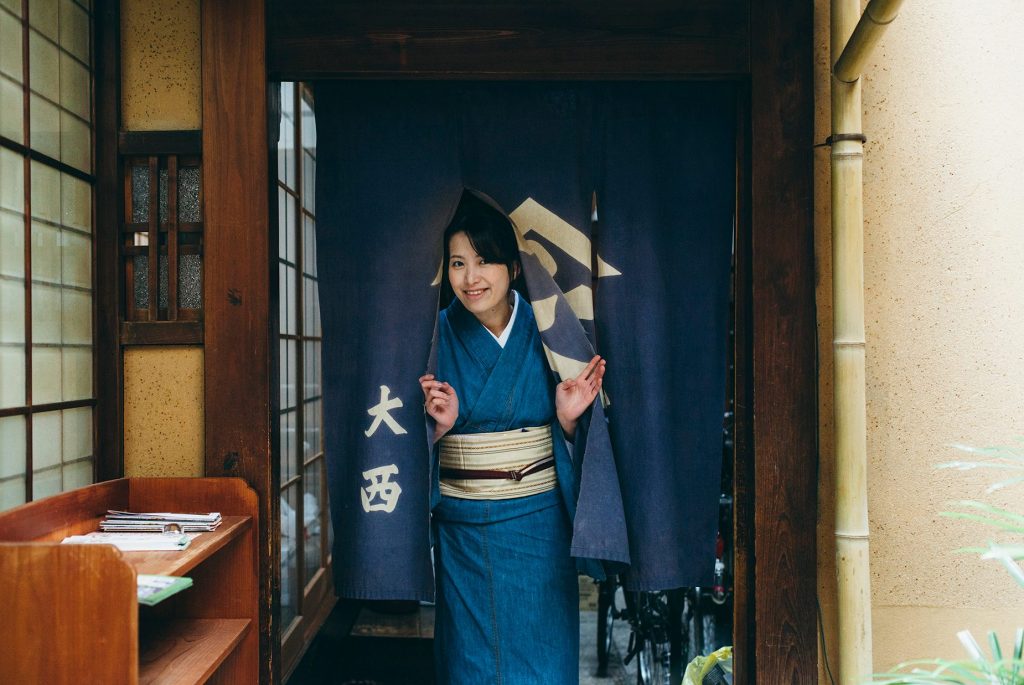
And, back to work!—– Have you practiced chanoyu (tea ceremony) since you were young?
Ohnishi: A little, yes, so I know the basics.
—– The shop building is a perfect Kyo-machiya. Including the okudo-san, I’m impressed by how it’s kept intact and is still in good use.
Ohnishi: Thanks to my parents and ancestors. It costs much more to keep up this house than building something new. I hope I can live here someday.
—– What do you do on your days off?
Ohnishi: What do I do… well, I end up often being in the shop because there are things going on here like hands-on experience classes for hand-painting fans on Sundays.
—– Where did you last go with your family, the three of you?
Ohnishi: Maybe the supermarket. Mandai is great; they’re cheap. Oh, no, what a depressing answer (laughter). My son goes to the pool on Saturdays, so I try to accompany him when I can get some time off work.
—– So the border between your work and private life is blurred?
Ohnishi: In a way, yes. Before I worked at a good-standing company where I would take all 40 days of my annual paid holidays, so I’m not really used to being in a situation where my work and private life aren’t clearly separated. Maybe that’s why I go off to drink (laughter). But, at heart, I feel at ease now: More so than I did when I was working as a businessperson in a town that wasn’t familiar to me.
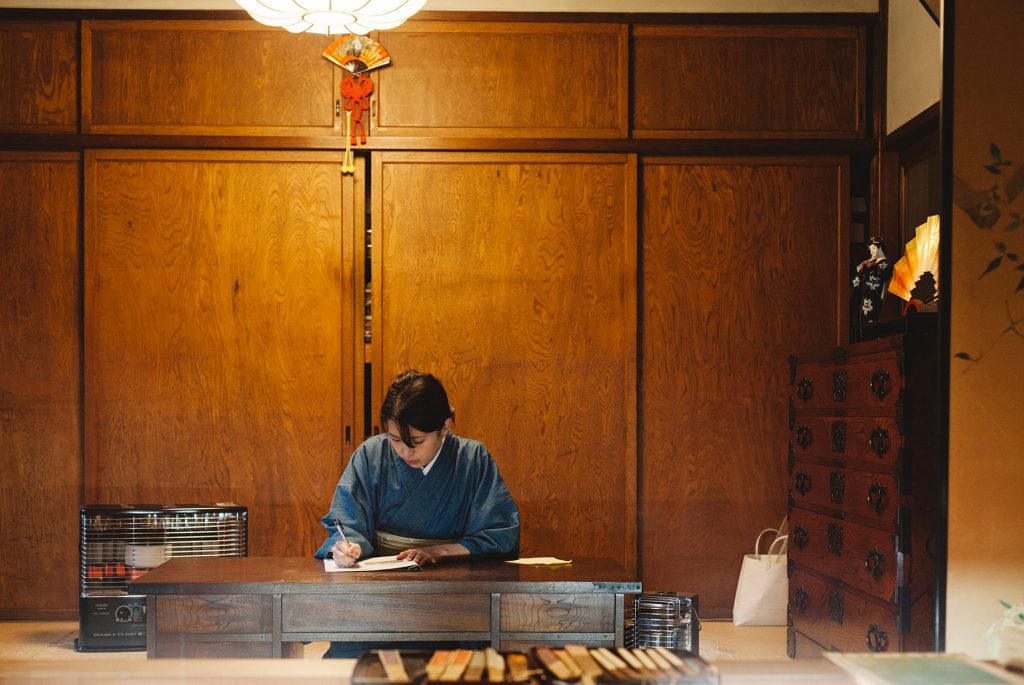

—– Why was it that you worked at an ordinary company first, before you started working for your family business?
Ohnishi: When I was a university student, I wasn’t very interested in crafts. I even felt shy or slightly embarrassed to say that my home is a folding fan shop. After I graduated from university, I was relocated to Kyushu. Then, I felt that people naturally accepted it when I told them that my family runs a folding fan shop. After I got married, I got pregnant, and I came back to Kyoto during my family-leave from work. During that time, I spent a long time in this shop, and gradually started to feel that this may be something I can do, so I quit my job and moved back to Kyoto.
—– Did the experience of working outside of the world of crafts change your perspective?
Ohnishi: I was strangely confident that there are things that could be done better. Until now, folding fans have been a summer business, and mostly related to the kimono business. The fact that it’s a precarious business model made me anxious, so now we’re developing products apart from our standard work.
—– Room Fragrance KAZA, using folding fan ribs, is one of them.
Ohnishi: I have a special attachment to that product because we made it seeking to create something that can be embraced within the contemporary lifestyle. Also, we have another new project we just started. We are working to organize a shared housing with shared studios for young artisans of traditional crafts. We’re looking to opening it next spring (2020).
—– Why did you decide on doing the housing/studio project?
Ohnishi: Many people are in difficult situations. For example, there are young people who have just finished craft school, making their craftworks at night in a cramped room while they do other part-time jobs during the day. I think Kyoto needs shared housing for artisans as they have overseas. I can’t stand it when there are people out there who have both the necessary talents and skills for creating good works, and yet they don’t get appropriate recognition or money for what they do.
—– So you strongly wish to help improve the situation of crafts now.
Ohnishi: It’s been two years since I came back to Kyoto, I finally started to get a grip on my work, and this is how I feel now. I know I sound like an awkward idealist (laughter).

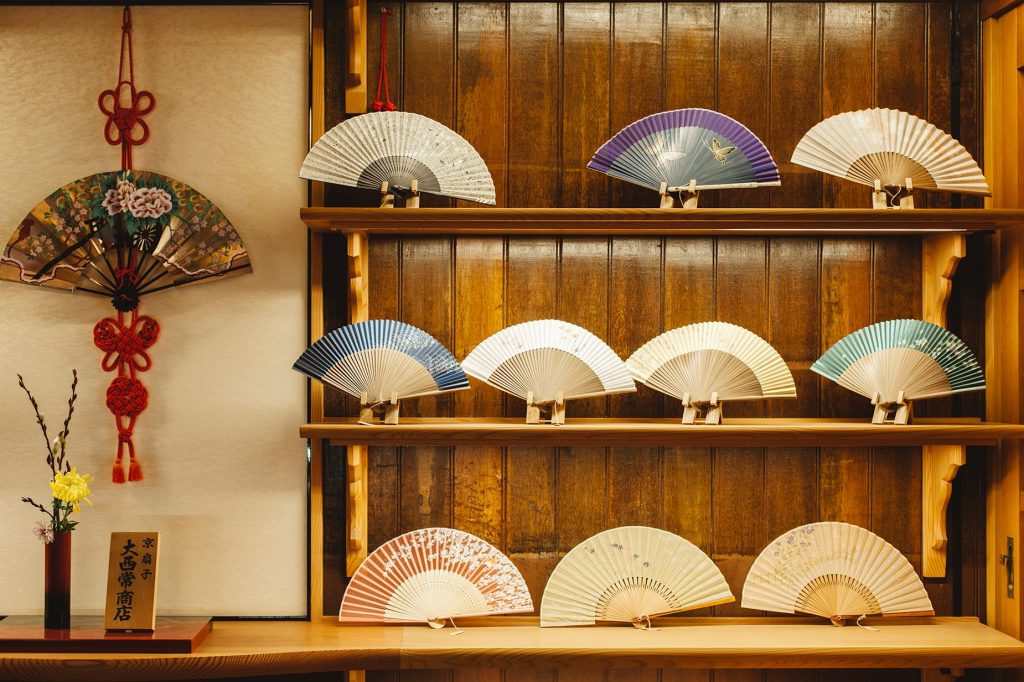
—– I think we do need passion at times. What is the appeal of crafts to you?
Ohnishi: This is just my personal opinion, but I do think that the best is yet to come. Although technology has developed and we are living a functional, convenient lifestyle, I’m convinced that things that strike a chord in our hearts or bring true richness to our everyday life are here to stay. I think that’s what crafts are, or at least, that’s what I feel I want to believe.
—– That’s why you think it’s necessary to change the environment and the way people work in the field.
Ohnishi: Yes. On the one hand, I believe in the future of craft, but on the other hand, some young artisans are trying hard and yet are still struggling to make a living around me. I hope to be of help to them.
—– You’re talking about “young artisans,” but you yourself are young.
Ohnishi: I’m 28. I’m also working very hard, so I think I will lose my motivation if my work is not appreciated. What’s going to happen to my future? Well, let’s just see (laughter).
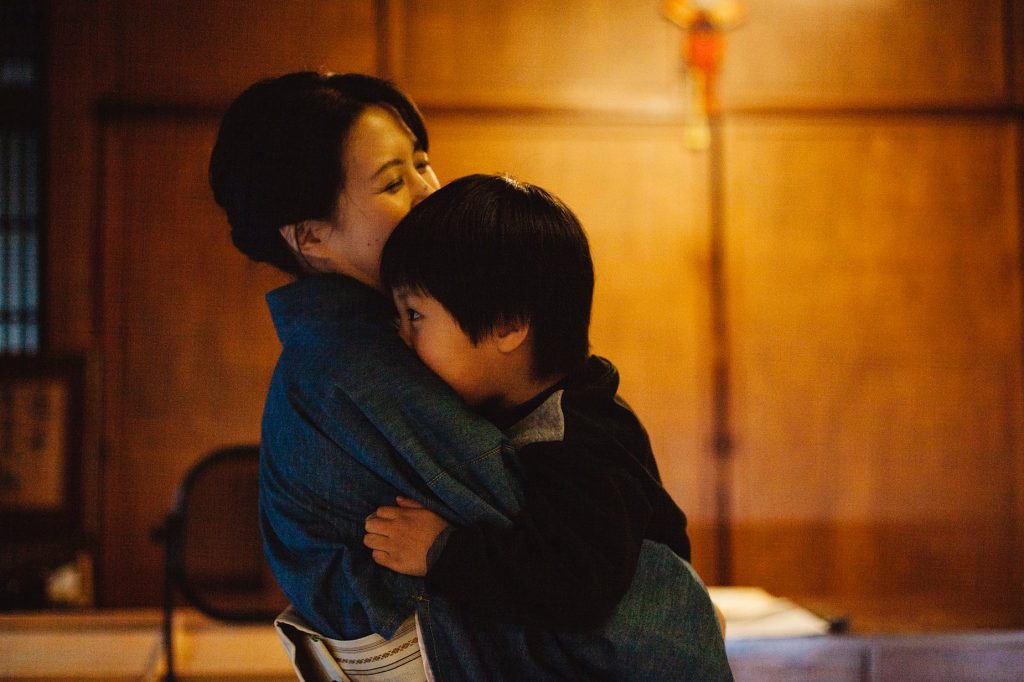
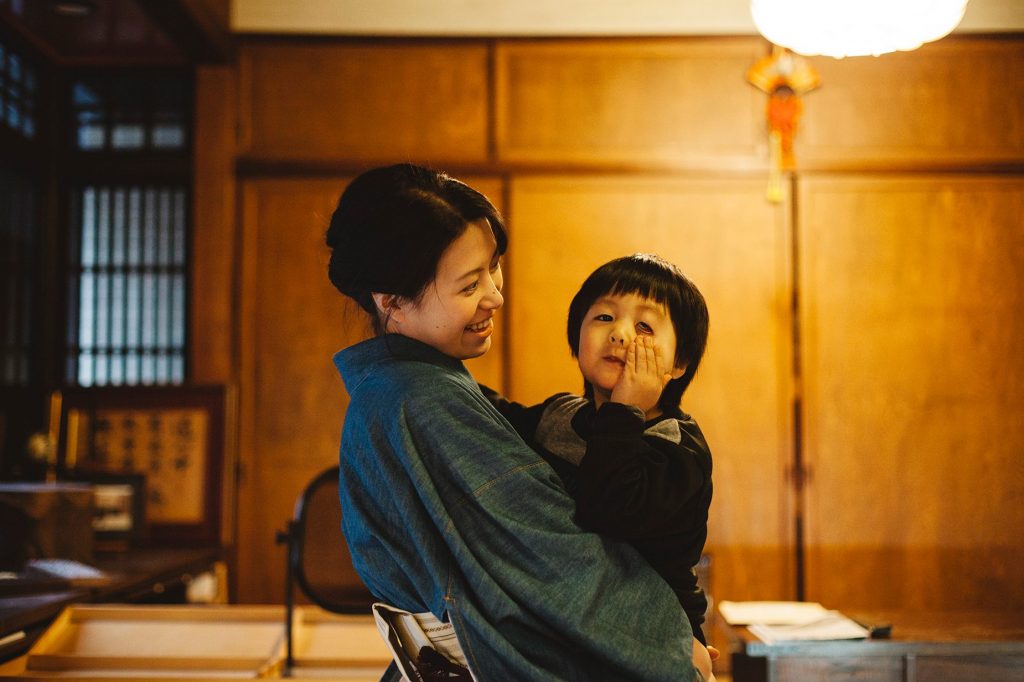
Now she’s got most of her work done for the day. Her son awaiting, ran up and jumped into her arms.
Ohnishi Tsune Shoten
Official website (Japanese)
TEXT BY ATSUSHI TAKEUCHI
PHOTOGRAPHS BY SHOKO HARA
19.03.28 THU 15:59


